Mayo Clinic Physicians Who Were Presidents of the American Gastroenterological Association
By Michael Camilleri, M.D. (GI, ’84)
from Clinical Enteric Neuroscience Translational and Epidemiological Research (C.E.N.T.E.R.), Division of Gastroenterology and Hepatology, Mayo Clinic College of Medicine, Rochester, Minn.
On May 20, 2015, it was my distinct honor to start a year as the 110th president of the American Gastroenterological Association (AGA), which was established in 1897. The first president of the AGA was Dr. C. G. Stockton from Buffalo, New York. This brief article reviews the formative years, education, training, the special activities in the AGA, and the major contributions to the fields of gastroenterology and hepatology of the seven prior AGA presidents who were Mayo Clinic physicians and held this position.
The table below lists the names and the years in which the Mayo Clinic physicians served as AGA president.
| Number in Order of AGA Presidency | Year | Name |
| 25 | 1928 | Walter C. Alvarez |
| 44 | 1949 | J. Arnold Bargen |
| 52 | 1957 | Mandred W. Comfort |
| 55 | 1960 | Hugh R. Butt |
| 59 | 1964 | Charles F. Code |
| 81 | 1986 | Douglas B. McGill |
| 102 | 2007 | Nicholas F. LaRusso |
| 110 | 2015 | Michael Camilleri |
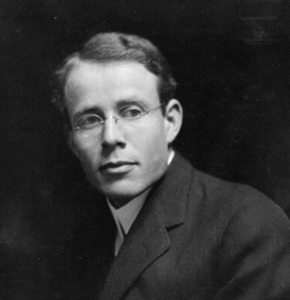 Walter Clement Alvarez (July 22, 1884 – June 18, 1978) (IM, ’26)
Walter Clement Alvarez (July 22, 1884 – June 18, 1978) (IM, ’26)
The Formative Years, Education and Appointment to Mayo Clinic
Walter Clement Alvarez was an American physician of Spanish descent. He was born in San Francisco, and spent his childhood in Hawaii where his father, Luis, was a government physician. He received his medical education at Stanford University, graduating in 1910. He worked in the lab of Walter B. Cannon from 1913 to 1915 (1), and subsequently practiced internal medicine in San Francisco and conducted research at the University of California, Berkeley. In 1926, he was appointed to the staff of Mayo Clinic and, in 1934, he became professor of medicine at the University of Minnesota (Mayo Foundation). In 1939, Alvarez was the physician who saw President John Fitzgerald Kennedy at Mayo Clinic.
Major Contributions to Gastroenterology and Hepatology
- Irritability of the bowel
From an original paper by Alvarez in 1915, he considered that both “irritating lesions also raise the local tone” and a change in patterns of contractions that impact transit, “factors such as differences in rhythm and irritability— play in altering the gradient of forces through the tract” (1). He studied the gradient of “irritability” of small intestinal muscle, reflecting the frequency and amplitude of contractions (2). Alvarez attributed the concept of “irritability” to altered contractions or motor activity. However, as a practicing gastroenterologist at Mayo Clinic, he was clearly aware of “mucous colitis or the syndrome of the sore bowel or the spastic colon”.
In a paper read at the Ontario Medical Association in Toronto in 1947, he stated:
“One of the commonest types of nervous indigestion is associated with a bowel that is sore much of the time. I say ‘bowel’ because the trouble is not limited to the colon. As is well known, in these cases the patient will from time to time pass considerable amounts of mucus in the stools. Such attacks are brought on commonly by nervous tension, an oncoming cold, or perhaps by constipation or the eating of some food to which the person is allergically sensitive. The great thing in handling these persons is not to reinforce their fear that there is something seriously wrong with the colon.” (3)
The term “irritable colon syndrome” (subsequently changed to irritable bowel syndrome) is attributed to Walter C. Alvarez (4).
- Alvarez was the first to investigate electric activity of the stomach with surface electrogastrography.
- One eponym associated with the name of Walter C. Alvarez (Alvarez’s syndrome) reflects a syndrome of abdominal bloating without any excess of gas in the digestive tract, and illustrates Alvarez’s understanding of the functional nature of the syndrome (5-7).
- Walter C. Alvarez was a prolific author. A PubMed search identifies 225 articles, with the first being a paper in the California State Journal of Medicine on “Intestinal Indigestion in Adults” and the last, an editorial published when he was 90 years old entitled “The Folly of Retirement at Age 65” (8). In addition, he authored several dozen books on medicine, including Nervousness, Indigestion and Pain, published in 1943, The Neuroses: Diagnosis and Management of Functional Disorders and Minor Psychoses in 1951, and Incurable Physician, An Autobiography in 1963.
In an assessment of the autobiography, Dr. J.H. Raach describes as follows (9): “Dr. Alvarez has used the medium of autobiography with restraint, admirably recounting the events in a busy and full life. The story is told in a style that is lucid, concise, and chatty. Anyone having the privilege of knowing Dr. Alvarez could open the book to any page and, after a paragraph of reading, identify the author. Unlike so many autobiographies, it is not overloaded with the first person pronoun, nor is it limited to recounting events in the author’s life.”
- After his retirement in 1951, Alvarez began writing a medical column which soon became syndicated in hundreds of daily and weekly newspapers in North America. The Walter C. Alvarez Memorial Award is presented by the American Medical Writers Association to honor excellence in communicating health care developments and concepts to the public.
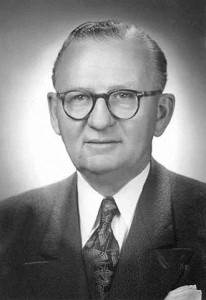 Arnold Bargen (October 25, 1894 – December 26, 1976) (I ’26)
Arnold Bargen (October 25, 1894 – December 26, 1976) (I ’26)
The Formative Years, Education and Appointment to Mayo Clinic
- Arnold Bargen was born in Mountain Lake, Minnesota, a small town about 160 miles from Rochester, Minnesota (10). His grandmother was a physician, trained and educated in Germany, and his father was a school teacher. From the age of 8, he determined to be a doctor after suffering pneumonia and empyema. He was brought to Mayo Clinic in 1904, and Dr. William J. Mayo placed tubes to drain the empyema and encouraged him to play a cornet to help expand his lung, which Bargen continued while a member of the Carleton College Band and the University of Chicago Band. While a biology major at Carleton College in Northfield, Minnesota, he was sent to Woods Hole, Massachusetts for one summer to do research on sea urchins in the Marine Biological Laboratory. He did not finish college because of World War I. He went to the University of Chicago, enlisted in the Medical Enlisted Reserve Corps, and finished medical courses and graduated from Rush Medical College in 1921. He interned for two years at St. Luke’s Hospital in Chicago, and for one year as the first John J. Borland Fellow in Medicine. In 1923, he began a 37-year career of research, teaching, and clinical practice in gastroenterology at Mayo Clinic. He began a second medical career in 1960 at the Scott and White Clinic in Temple, Texas as a gastroenterologist and medical educator.
Service to AGA
Bargen was secretary of the AGA from 1942 to 1947 and president in 1949. He was awarded the organization’s prestigious Julius Friedenwald Medal in 1967.
Major Contributions to Gastroenterology and Hepatology
- Arnold Bargen was a prolific author, with 133 articles focused on colonic diseases, particularly ulcerative colitis and regional enteritis.
- Regional enteritis (11-13): Bargen was asked to discuss the presentation by Burrill B. Crohn at the 1932 meeting of the American Medical Association in New Orleans on “Terminal Ileitis”. Bargen proposed the change in terminology to “regional enteritis”, as he had “seen more patients with regional ileitis by that time than he (Crohn) had, but I hadn’t made any report”, and “the condition occurred in other places in the small intestine than the distal ileum”, as recorded in an interview. In fact, Bargen used the term “regional enteritis” to describe chronic inflammatory lesions of the small intestine when he eventually reported his experience in 1934, and he followed this up with a publication in 1950.
- Natural history of ulcerative colitis in >2000 patients (14)
- Complications of ulcerative colitis including hepatic, adrenal and renal complications, and cancer (15, 16)
- Pharmacological therapy of colonic diseases, including ulcerative colitis with sulfasalazine, and bowel dysfunction with methyl cellulose (17,18)
- Small intestinal motility in health and diseases such as scleroderma and diabetes, including the first description of diabetic diarrhea and steatorrhea (19-21)
- Disorders of colon motility and myenteric plexus in ulcerative colitis (22,23)
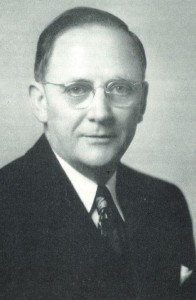 Mandred W. Comfort (June 10, 1894 – August 7, 1957) (N’28)
Mandred W. Comfort (June 10, 1894 – August 7, 1957) (N’28)
The Formative Years and Education and Appointment to Mayo Clinic
Mandred Whitset Comfort was born in 1894 in Hillsboro, Texas. He obtained a bachelor’s degree in 1916 from Austin College in Sherman, Texas and a doctor of medicine degree from University of Texas in 1921. He joined Mayo Clinic as a fellow in the Department of Neurology in 1923, and he graduated in 1926 with a master’s degree in neurology from the University of Minnesota. He became a consultant in the Department of Internal Medicine, associated with the Section of Gastroenterology, at Mayo Clinic in 1928 (24).
Service to AGA
Mandred Comfort served as president of the AGA in 1957 and, unfortunately, passed away during his year as president.
Major Contributions to Gastroenterology and Hepatology
Mandred Comfort is best known for his classic work on defining the manifestations of several pancreatic diseases, including:
- chronic relapsing pancreatitis with or without biliary disease (25,26)
- first description of hereditary pancreatitis (27)
- diagnosis of pancreatic insufficiency using secretin stimulation test, and fecal fat and nitrogen excretion (28,29)
- carcinoma complicating chronic pancreatitis
- pancreatic atrophy (subsequently termed senile atrophic pancreatitis)
- Acute pancreatic necrosis (30)
He also described other diseases associated with malabsorption including non-tropical sprue and Whipple’s disease, and effects of gastric surgery on malabsorption (31-33).
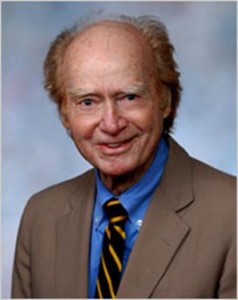 Hugh R. Butt (January 8, 1910 – August 16, 2008 ) (I ’36)
Hugh R. Butt (January 8, 1910 – August 16, 2008 ) (I ’36)
The Formative Years and Education Prior to Appointment to Mayo Clinic
Hugh R. Butt was a Virginian of nine generations. The first Butts settled in Virginia in 1657. He studied medicine at the University of Virginia, began his research career as a medical student by quantitating creatinine excretion in children with muscular dystrophy, and graduated from medical school at the age of 23. After an internship in Pennsylvania, he entered fellowship training in medicine at Mayo Clinic, was chosen to be Dr. William J. Mayo’s first assistant. He completed a master’s thesis and then spent a year in full-time laboratory work with Ancel Keys, receiving systematic training in analytical biochemistry. Hugh Butt was inspired to excel in all that he did, inspired by the example from his father. As recorded by Dr. Alan Hofmann (34), “On one occasion, his father had led Hugh to the top of a hill overlooking a quarter mile athletic track and pointed to it. He said, ‘Son, that track is your life. Remember, you only go around it once. Run well, have a good time, enjoy the scenery-and win’.”
Service to AGA and other National Organizations
Hugh Butt was president of the AGA in 1960. He was awarded the organization’s Julius Friedenwald Medal in 1979. Hugh Butt joined Hans Popper, Jesse Bollman, and others in founding the American Association for the Study of Liver Disease, eventually serving as its president. In addition, as president of the American College of Physicians, he developed the idea of the self-assessment test (35,36). In recognition of this contribution, Hugh Butt was elected to the Royal College of Physicians in 1971 (34).
Major Contributions to Gastroenterology and Hepatology
- The role of vitamin K in hemorrhage in patients with chronic liver disease and jaundice (37). The isolation of vitamin K, as described in Dr. Alan Hofmann’s article (34) on Butt, was “a tedious and smelly isolation procedure on putrefied fish meal, working nights and weekends”, followed by a bioassay in chickens by Jesse Bollman, and heroic instillation of the extract and bile in a surgical patient bleeding to possible death on the operating table as a result of longstanding jaundice caused by a common bile duct stone.
- First use of anticoagulants (dicoumarol) in clinical studies in humans (38)
- First study testing the efficacy of cortisone in liver disease (39)
- Descriptions of manifestations of liver disease as well as unique kindreds with Gilbert’s syndrome and the Dubin-Johnson syndrome (40-42)
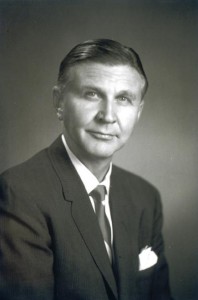 Charles F. Code (February 1, 1910 – November 18, 1997) (PHYS ’36)
Charles F. Code (February 1, 1910 – November 18, 1997) (PHYS ’36)
The Formative Years and Education Prior to Appointment to Mayo Clinic
Charles Frederick Code was born in Winnipeg, Manitoba, Canada and received a bachelor’s degree and a medical degree from the University of Manitoba (where “he was fatally infected by the virus of research when he was a medical student in Winnipeg”, according to Horace Davenport), and a Ph.D. from the University of Minnesota (43,44).
Like J. Arnold Bargen, Charles F. Code was taken to Mayo Clinic when he was a boy. Code was taken from his native Winnipeg, Manitoba to be treated for poliomyelitis. He suffered from scarlet fever when he was 8 years old and contracted polio at 12 years of age. He wore a back brace and leg braces, eventually replaced by canes. He chose to focus a career on research because he was concerned that he would not be mobile enough to treat patients.
He joined Mayo Clinic as a clinical fellow in 1934 and, for years, he held retractors for Frank Mann in experimental surgery. After further training with Lovatt Evans and Sir Henry Dale at University College in London, England, he returned to Mayo Clinic and became professor of physiology at 36 years of age. He championed the easy flow of knowledge at Mayo Clinic from the basic science laboratory to the patient.
In the early 1970s, Charles Code helped lead the effort to form the Mayo Medical School, served as the first director for education and research, and became a member of the board of governors. After retiring from Mayo Clinic, he went to the University of California at Los Angeles and later to the University of California at San Diego.
Service to AGA
Apart from serving as president of the AGA, Charles F. Code was awarded the AGA’s Julius Friedenwald Medal in 1974. He served as mentor to many future leaders in the fields of gastroenterology, physiology, surgery and nutrition. It was stated that during the 1970s, most, if not all, of the academic chairs of departments of surgery in the United Kingdom had trained or been mentored by Charles Code.
Major Contributions to Gastroenterology and Hepatology
Charles F. Code wrote more than 300 scientific papers (including 246 articles identified in PubMed) and edited the first Handbook of Physiology, published by the American Physiological Society.
In addition to firmly establishing the role of histamine in allergic reactions, paving the way to the development of antihistamines as mainstay treatments of allergies and, during World War II, leading a team of Mayo physiologists to find out why pilots blacked out during combat maneuvers and as a result developing the ”G” suit with pouches around the legs that could be filled with air on demand, thus preventing blood from pooling below the waist and allowing the pilot to remain conscious, Charles Code made several seminal contributions to the fields of gastroenterology and hepatology.
- Histamine plays an important role in mediating acid secretion in the stomach – This research led to the development of anti-secretory drugs to treat peptic ulcers and hyperacidity (45,46).
- Studies using radiological methods, balloon-based measurements of phasic pressure activity, and serosal electrical recordings to characterize the patterns of movement (motility) of the esophagus, stomach and the intestines in dogs and healthy humans during digestion and between meals – His tracings of esophageal motility constituted the reference guide for diagnosis of esophageal motility disorders, including achalasia and esophageal scleroderma (47,48). Code was a great admirer of the work of Walter B. Cannon, and he had stated with “unaffected modesty that he has spent his life repeating Cannon’s work”. His observations on interdigestive motility in the small intestine complemented those of Joseph H. Szurszewski who discovered the interdigestive migrating motor complex. Code extended studies to examine the extrinsic innervation of the gastrointestinal tract through meticulous denervation studies involving vagotomy and prevertebral ganglionectomy (49-52).
- Salt and water movements in the stomach and intestine and the control of secretion (53)
- Gastric mucosal barrier and cytoprotection
- Effects of hormones and peptides on gastrointestinal physiology, including histamine, gastrin, somatostatin, prostaglandins
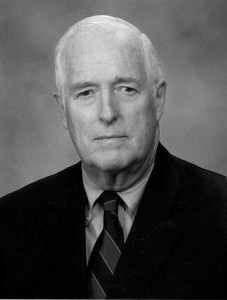 Douglas B. McGill (August 14, 1929 – Feb. 21, 2004) (I ’61)
Douglas B. McGill (August 14, 1929 – Feb. 21, 2004) (I ’61)
The Formative Years and Education Prior to Appointment to Mayo Clinic
Douglas B. McGill was born in New York City in 1929, the only child of talented and successful parents. His mother had an early career in the theater and later became a writer of drama and poetry, as well as a published novelist. His father was a prominent radio director. McGill’s early education was in New York private schools, with secondary schooling at Phillips Andover Academy, and at Yale for premedicine (with special interests in psychology and political science) where he graduated in 1951. He then attended Tufts University School of Medicine in Boston, where his ancestor, Dr. Francis Henry Brown, had been a founder of Boston Children’s Hospital. After graduation in 1955, he pursued medical internship at Boston City Hospital (where he recalls receiving inspiration from Dr. Franz Inglefinger). After internship, he was called to active duty with the United States Army Medical Corps, spending the next two years in France. He then entered a gastroenterology fellowship at Mayo Clinic, and worked with Dr. Jesse Bollman on bilirubin chemistry and metabolism (54).
Service to the AGA and other Organizations
In addition to being president of the AGA in 1986, his AGA service started in 1973 when he served on the Education and Training Committee, followed by the Manpower Task Force, and the Legislative Liaison Committee. He served as councilor and member of the governing board. He also served on numerous committees of the American College of Physicians, including the subcommittee responsible for the gastroenterology section of the Medical Knowledge Self-Assessment Program.
Major Contributions to Gastroenterology and Hepatology
- Natural history and genetic and biochemical abnormalities of Dubin-Johnson syndrome
- Diverse liver diseases (55) including the effects of methotrexate on the liver, tumors of the liver including oral contraceptive-related liver tumors, postoperative jaundice, acute and chronic hepatitis and non-alcoholic fatty liver disease (56).
- HemoQuant for detection of occult fecal blood for early diagnosis of colorectal cancer (57,58)
- Lactase and other disaccharidase deficiencies of the small intestine (59,60)
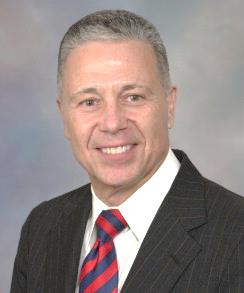 Nicholas F. LaRusso (born November 2, 1942) (I ’72, GI ’75)
Nicholas F. LaRusso (born November 2, 1942) (I ’72, GI ’75)
The Formative Years and Education Prior to Appointment to Mayo Clinic
Nicholas F. LaRusso was born and raised in Brooklyn, New York and attended high school at Brooklyn Preparatory School. His leadership skills were apparent early in life as he excelled as the captain and quarterback of his high school football team. He learned how to pass the ball and delegate for success. After Brooklyn Preparatory School, he attended Boston College, graduating magna cum laude with a bachelor’s degree in biology. He graduated from New York Medical College in 1969, and then did a year of internship at Metropolitan Hospital Medical Center in New York City. Following medical residency and gastroenterology fellowship at Mayo Clinic, he was a guest investigator in the Department of Biochemical Cytology at Rockefeller University from 1975 to 1977 in the program of Dr. Christian de Duve. This completed his training to become a physician-scientist, a position he has held to the present at Mayo Clinic. He has also served as chair of the Division of Gastroenterology and Hepatology, and as chair of the Department of Medicine (61,62).
Service to AGA and other National Organizations
Nicholas LaRusso has served as editor of the premier medical journal Gastroenterology, as president of the AGA in 2007, and also as president of the American Association for the Study of Liver Disease. He has facilitated the organization of academic pursuits and innovative care delivery in gastroenterology and medicine. This initiative also led to important contributions to policy statements by the Institute of Medicine (63-65).
Major Contributions to Gastroenterology and Hepatology
- Dynamics of the enterohepatic circulation of bile acids (with Dr. Alan Hofmann) (66)
- Role of lysosomal proteins, copper overload, and exosomes in liver diseases – These studies built on concepts of the role of cellular organelles in the development of diverse liver disease, with major focus on the biliary epithelial cells or cholangiocytes (67-71).
- Clinical features, mechanisms, natural history and treatment of primary sclerosing cholangitis – These studies were based on the vast clinical experience of a whole team of hepatologists at Mayo Clinic, including Russell Wiesner, Gregory Gores, and Konstantinos Lazaridis, who literally wrote the book on the disease and enhanced its management, including hepatic transplantation (72,73).
- Mechanisms of diseases affecting cholangiocytes, including channelopathies, aquaporins – This study led to a focus on epithelial channels in addition to intracellular organelles in the development of these diseases, with potential for future development of therapies directed to these specific mechanisms (74,75).
- Mechanisms of development of polycystic liver disease and the roles of ciliopathies and somatostatin in collaboration with nephrologists investigating the mechanisms of cyst development in the kidneys (76,77)
References
- Alvarez WC. The motor functions of the intestine from a new point of view. JAMA. 1915;65:388-394.
- Alvarez WC, Hosoi K. A gradient of irritability in the small intestine. Am J Physiol. 1929;89:182-186.
- Alvarez WC. Indigestion and abdominal pain with negative findings. Can Med Assoc J. 1947;57:425-432.
- Camilleri M. Commentary: Irritable bowel syndrome: How useful is the term and the “diagnosis”? Ther Adv Gastroenterol. 2012;5:381-386.
- Alvarez WC. Marked abdominal bloating not due to gas but to a neurosis of the abdominal wall. Trans Assoc Am Physicians. 1947;60:86-91.
- Alvarez WC. Hysterical type of nongaseous abdominal bloating. Arch Intern Med (Chic). 1949;84:217-245.
- Schmoll E, Alvarez WC. Intestinal indigestion in adults. Cal State J Med. 1911;9:313-315.
- Alvarez WC. Editorial: The folly of retirement at age 65. Geriatrics. 1974;29:153.
- Raach JH. Incurable physician: An autobiography. JAMA. 1963;186:876.
- J. Arnold Bargen, M.D.: An oral history. Recorded by James D. Boyle, M.D., Oct. 23 – Nov. 20, 1968. The American Gastroenterological Association Los Angeles, California 1969 http://oculus.nlm.nih.gov/cgi/t/text/text-idx?c=oralhist;cc=oralhist;rgn=main;view=text;idno=2935137r
- Bargen JA, Brown PW, Weber HM. Chronic inflammatory lesions of the small intestine (regional enteritis). Amer J Dig Dis. 1934;1:426-431.
- Bargen JA, Van Patter W, Dockerty M, Feldman B, Mayo W. Regional enteritis. Gastroenterology. 1950;26:247-250.
- Bockus HL, Morson BC, Marshak RH, Bargen JA, Brooke B, Marshall SF, Crohn BB. Regional enterocolitis. Dis Colon Rectum. 1965;8:1-10.
- Sloan WP Jr, Bargen JA, Gage RB. Life histories of patients with chronic ulcerative colitis: a review of 2,000 cases. Gastroenterology. 1950;16:25-38.
- Jones GW, Baggenstoss AH, Bargen JA. Hepatic lesions and dysfunction associated with chronic ulcerative colitis. Am J Med Sci. 1951;221:279-286.
- Jensen EJ, Baggenstoss AH, Bargen JA. Renal lesions associated with chronic ulcerative colitis. Am J Med Sci. 1950;219:281-290.
- Bargen JA. A method of improving function of the bowel; the use of methylcellulose. Gastroenterology. 1949;13:275-279.
- Bargen JA. Treatment of ulcerative colitis with salicylazosulfapyridine (salazopyrin). Med Clin North Am. 1949;33:935-942.
- Foulk WT, Code CF, Morlock CG, Bargen JA. A study of the motility patterns and the basic rhythm in the duodenum and upper part of the jejunum of human beings. Gastroenterology. 1954;26:601-611.
- Sommerville RL, Bargen JA, Pugh DG. Scleroderma of the small intestine. Postgrad Med. 1959;26:356-364.
- Bargen JA, Bollman JL, Kepler EJ. The “diarrhea of diabetes” and steatorrhea of pancreatic insufficiency. Mayo Clin Proc. 1936;11:737-742.
- Bargen JA, Springs EA, Code CF, Curtiss R. Motility of the pelvis, colon and rectum of normal persons and patients with ulcerative colitis. Gastroenterology. 1951;19:480-491.
- Code CF, Rogers AG, Schlegel J, Hightower NC Jr, Bargen JA. Motility patterns in the terminal ileum; studies on two patients with ulcerative colitis and ileac stomas. Gastroenterology. 1957;32:651-665.
- Butt HR, Ghormley RK. Mandred W. Comfort, 1894-1957. Gastroenterology. 1958;34:329-330.
- Comfort MW, Gambill EE, Baggenstoss AH. Chronic relapsing pancreatitis; a study of 29 cases without associated disease of the biliary or gastrointestinal tract. Gastroenterology. 1946;6:376-408.
- Gambill EE, Comfort MW, Baggenstoss AH. Chronic relapsing pancreatitis; an analysis of 27 cases associated with disease of the biliary tract. Gastroenterology. 1948;11:1-33.
- Gross JB, Comfort MW. Hereditary pancreatitis: report on two additional families. Gastroenterology. 1957;32:829-854.
- Dornberger GR, Comfort MW, et al. Total fecal solids, fat and nitrogen; a study of patients with chronic relapsing pancreatitis. Gastroenterology. 1948;11:691-700.
- Dornberger GR, Comfort MW, et al. Pancreatic function as measured by analysis of duodenal contents before and after stimulation with secretin. Gastroenterology. 1948;11:701-713.
- Roberts NJ, Baggenstoss AH, Comfort MW. Acute pancreatic necrosis; a clinicopathologic study. Am J Clin Pathol. 1950;20:742-764.
- Comfort MW, Wollaeger EE, Taylor AB. Nontropical sprue; observations on absorption and metabolism. Gastroenterology. 1953;23:155-178.
- Pemberton JD, Comfort MW, et al. Intestinal lipodystrophy (Whipple’s disease) preliminary report of three cases in an early stage of the disease. Surg Gynecol Obstet. 1947;85:85-91.
- Wollaeger EE, Comfort MW, et al. The total solids, fat and nitrogen in the feces of persons who have undergone partial gastrectomy with anastomosis of the entire cut end of the stomach to the jejunum (polya anastomosis). Gastroenterology. 1946;6:93-104.
- Hofmann AF. Presentation of the Julius M. Friedenwald Medal of the American Gastroenterological Association to Dr. Hugh Roland Butt: A Laudation. Gastroenterology. 1979;77:967-970.
- Butt HR. Self-assessment of medical knowledge. N Engl J Med. 1968;278:964.
- Butt HR. Self-assessment of medical knowledge programs. N Engl J Med. 1974;291:791-793.
- Butt HR, Snell AM, Osterberg AE. The use of vitamin K and bile in treatment of the hemorrhagic diathesis in cases of jaundice. Proc Staff Meet Mayo Clin. 1938;13:74-77.
- Butt HR, Allen EV, Bollman JL. A preparation from spoiled sweet clover [13,3-methylene-bis-4-hydroxcoumarin] which prolongs coagulation time of the blood. Preliminary report of experimental and clinical studies. Proc Staff Meet Mayo Clin. 1941;16:388-395.
- Butt HR, Comfort MW, Power MH, et al. Observations on the effect of cortisone acetate on two patients with hepatic disease. J Lab Clin Med. 1951;37:870-884.
- Butt HR, Amatuzio OS, Bollman JL, et al. The clinical and biochemical features of hepatic insufficiency. Gastroenterology. 1953;25:471-486.
- Foulk WT, Butt HR, Owen CA JR, et al. Constitutional hepatic dysfunction (Gilbert’s disease), its natural history and related syndromes. Medicine. 1959;38:25-44.
- Butt HR, Anderson VE, Foulk WT, et al. Studies of chronic idiopathic jaundice (Dubin-Johnson syndrome). II. Evaluation of a large family with the trait. Gastroenterology. 1966;51:619-630.
- Davenport HW. Presentation of the Julius Friedenwald Medal to Charles F. Code. Gastroenterology. 1974;66:1107-1108.
- Dicke W. Charles Code, 87, Leader in Allergy Research. http://www.nytimes.com/1997/12/12/us/charles-code-87-leader-in-allergy-research.html
- Preiss DU, Code CF. Effect of the H2-receptor antagonists (burimamide and metiamide) on gastric secretion stimulated by histamine and its methyl derivatives. J Pharmacol Exp Ther. 1975;193:614-620.
- Dousa TP, Code CF. Effect of histamine and its methyl derivatives on cyclic AMP metabolism in gastric mucosa and its blockade by an H2 receptor antagonist. J Clin Invest. 1974;53:334-337.
- Code CF. Comparative evaluation of motility studies in the diagnosis of esophageal disease. Gastroenterology. 1969;56:798-801.
- Garrett JM, Winkelmann RK, Schlegel JF, Code CF. Esophageal deterioration in scleroderma. Mayo Clin Proc. 1971;46:92-96.
- Szurszewski JH, Elveback LR, Code CF. Configuration and frequency gradient of electric slow wave over canine small bowel. Am J Physiol. 1970;218:1468-1473.
- Kelly KA, Code CF. Effect of transthoracic vagotomy on canine gastric electrical activity. Gastroenterology. 1969;57:51-58.
- Marlett JA, Code CF. Effects of celiac and superior mesenteric ganglionectomy on interdigestive myoelectric complex in dogs. Am J Physiol. 1979;237:E432-E443.
- Code CF, Marlett JA. The interdigestive myo-electric complex of the stomach and small bowel of dogs. J Physiol. 1975;246:289-309.
- Heaton JW Jr, Code CF. Sodium-glucose relationships during intestinal absorption in dogs. Am J Physiol. 1969;216:749-755.
- Hoffman HN. Our new President—Douglas B. McGill, M.D. Gastroenterology. 1986;91:273-276.
- McGill DB, Motto JD. An industrial outbreak of toxic hepatitis due to methylenedianiline. N Engl J Med. 1974;291:278-282.
- Ludwig J, Viggiano TR, McGill DB, Oh BJ. Nonalcoholic steatohepatitis: Mayo Clinic experiences with a hitherto unnamed disease. Mayo Clin Proc. 1980;55:434-438.
- Ahlquist DA, McGill DB, Schwartz S, Taylor WF, Owen RA. Fecal blood levels in health and disease. A study using HemoQuant. N Engl J Med. 1985;312:1422-1428.
- Ahlquist DA, Wieand HS, Moertel CG, et al. Accuracy of fecal occult blood screening for colorectal neoplasia. A prospective study using Hemoccult and HemoQuant tests. JAMA. 1993;269:1262-1267.
- Newcomer AD, McGill DB, Thomas PJ, Hofmann AF. Prospective comparison of indirect methods for detecting lactase deficiency. N Engl J Med. 1975;293:1232-1236.
- Newcomer AD, Thomas PJ, McGill DB, Hofmann AF. Lactase deficiency: a common genetic trait of the American Indian. Gastroenterology. 1977;72:234-237.
- Lazaridis KN, Gores GJ. Our New President—Nicholas F. LaRusso, M.D. Gastroenterology. 2007;132:2005-2011.
- Gores GJ, Katzka DA. Presentation of the Julius M. Friedenwald Medal to Nicholas F. LaRusso, M.D. Gastroenterology. 2014;146:1813-1817.
- McDonald FS, Schultz HJ, LaRusso NF. A learner-centered academic career development curriculum. Acad Med. 2002;77:463.
- Wood DL, Brennan MD, Chaudhry R, et al. Standardized care processes to improve quality and safety of patient care in a large academic practice: the Plummer Project of the Department of Medicine, Mayo Clinic. Health Serv Manage Res. 2008;21:276-280.
- Brennan MD, Duncan AK, Armbruster RR, Montori VM, Feyereisn WL, LaRusso NF. The application of design principles to innovate clinical care delivery. J Healthc Qual. 2009;31:5-9.
- LaRusso NF, Korman MG, Hoffman NE, Hofmann AF. Dynamics of the enterohepatic circulation of bile acids (Postprandial serum concentrations of conjugates of cholic acid in health, cholecystectomized patients, and patients with bile acid malabsorption). N Engl J Med. 1974;291:689-692.
- LaRusso NF, Fowler S. Coordinate secretion of acid hydrolases in rat bile. J Clin Invest. 1979;64:948-954.
- Masyuk AI, Masyuk TV, Larusso NF. Exosomes in the pathogenesis, diagnostics and therapeutics of liver diseases. J Hepatol. 2013;59:621-625.
- Banales JM, Sáez E, Uriz M, et al. Up-regulation of microRNA 506 leads to decreased Cl-/HCO3- anion exchanger 2 expression in biliary epithelium of patients with primary biliary cirrhosis. Hepatology. 2012;56:687-697.
- Myers BM, Prendergast FG, Holman R, Kuntz SM, Larusso NF. Alterations in hepatocyte lysosomes in experimental hepatic copper overload in rats. Gastroenterology. 1993;105:1814-1823.
- Gross JB Jr, Myers BM, Kost LJ, Kuntz SM, LaRusso NF. Biliary copper excretion by hepatocyte lysosomes in the rat. Major excretory pathway in experimental copper overload. J Clin Invest. 1989;83:30-39.
- Wiesner RH, LaRusso NF. Clinicopathologic features of the syndrome of primary sclerosing cholangitis. Gastroenterology. 1980;79:200-206.
- LaRusso NF, Wiesner RH, Ludwig J, MacCarty RL. Current concepts. Primary sclerosing cholangitis. N Engl J Med. 1984;310:899-903.
- Huebert RC, Splinter PL, Garcia F, Marinelli RA, LaRusso NF. Expression and localization of aquaporin water channels in rat hepatocytes. Evidence for a role in canalicular bile secretion. J Biol Chem. 2002;277:22710-22717.
- Splinter PL, Masyuk AI, Marinelli RA, LaRusso NF. AQP4 transfected into mouse cholangiocytes promotes water transport in biliary epithelia. Hepatology. 2004;39:109-116.
- Masyuk AI, Gradilone SA, LaRusso NF. Calcium signaling in cilia and ciliary-mediated intracellular calcium signaling: are they independent or coordinated molecular events? Hepatology. 2014;60:1783-1785.
- Masyuk TV, Radtke BN, Stroope AJ, et al. Pasireotide is more effective than octreotide in reducing hepatorenal cystogenesis in rodents with polycystic kidney and liver diseases. Hepatology. 2013;58:409-421.